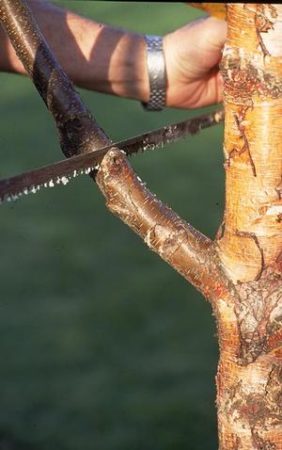Post category: Pruning
Pruning is the removal of part of a plant. The simplest form of pruning is to use the fore-finger and thumb to pinch out a soft growing point. This simple action can put a stop to extension growth and encourages side-shoots to grow.

First cut to avoid tearing the tree trunk
Dis-budding is the rubbing out of surplus shoots or flower buds and is sometimes used to increase the size of the remaining flowers. Dead-heading means removing flowers that have dropped their petals, preventing seed production which has a tendency to weaken plants and reduce flowering in the following year.
These are types of pruning, but what is generally taken to mean pruning is the removal of branches, or parts of branches. There is a balance in any plant between root and top. Pruning away part of the top creates an imbalance since the remainder has more root serving it and, as a result, grows more rapidly.
The part removed will be replaced by young growth, thus pruning both rejuvenates a plant and changes its shape. Skilful and careful pruning can actually improve plant shape, but bad pruning can destroy it. Any pruning means injury to the plant and all pruning should be clean and neat and properly carried out.
When removing the lower branches of trees, cut partway through the branch first to avoid tearing the tree trunk. Then cut through the top to remove the branch. Finally carefully remove the branch ‘snag’, leaving the branch ‘collar’ intact.


